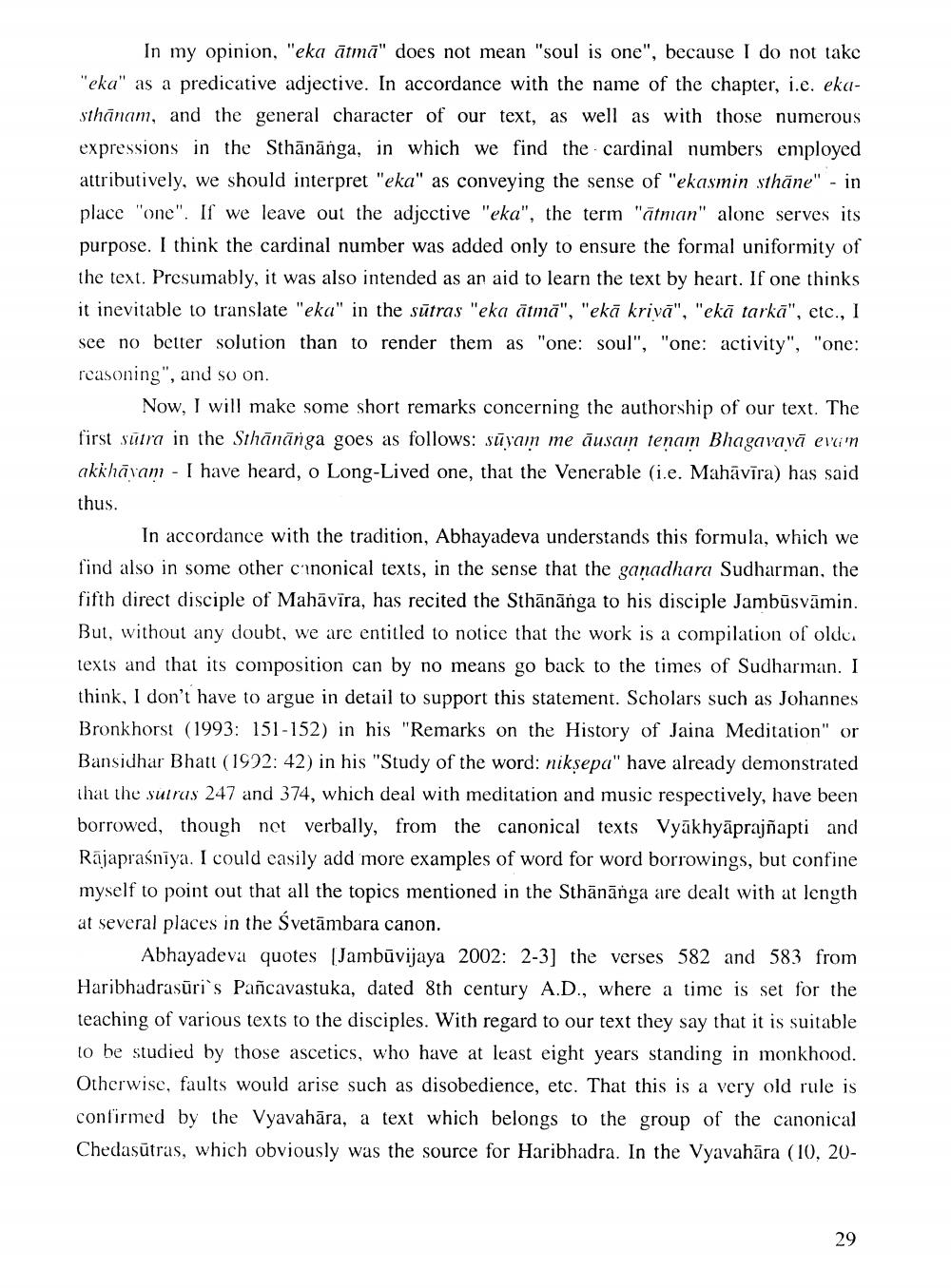________________
In my opinion, "eka ātmā" does not mean "soul is one", because I do not take "eka" as a predicative adjective. In accordance with the name of the chapter, i.e. ekasthānam, and the general character of our text, as well as with those numerous expressions in the Sthānānga, in which we find the cardinal numbers employed attributively, we should interpret "eka" as conveying the sense of "ekasmin sthāne" - in place "one". If we leave out the adjective "eka", the term "ätnian" alone serves its purpose. I think the cardinal number was added only to ensure the formal uniformity of the text. Presumably, it was also intended as an aid to learn the text by heart. If one thinks it inevitable to translate "eka" in the sūtras "eka ātmā", "ekā krivā", "ekā tarkā", etc., I see no better solution than to render them as "one: soul", "one: activity", "one: reasoning", and so on.
Now, I will make some short remarks concerning the authorship of our text. The first sūtra in the Sthānănga goes as follows: suyam me ausam tenam Bhagavavā evaim akkhāvam - I have heard, o Long-Lived one, that the Venerable (i.e. Mahāvīra) has said thus.
In accordance with the tradition, Abhayadeva understands this formula, which we find also in some other canonical texts, in the sense that the ganadhara Sudharman, the fifth direct disciple of Mahāvīra, has recited the Sthānānga to his disciple Jambūsvāmin. But, without any doubt, we are entitled to notice that the work is a compilation of oldu. texts and that its composition can by no means go back to the times of Sudharman. I think, I don't have to argue in detail to support this statement. Scholars such as Johannes Bronkhorst (1993: 151-152) in his "Remarks on the History of Jaina Meditation" or Bansidhar Bhatt (1992: 42) in his "Study of the word: niksepa" have already demonstrated that the sulras 247 and 374, which deal with meditation and music respectively, have been borrowed, though net verbally, from the canonical texts Vyākhyāprajñapti and Rājapraśniya. I could easily add more examples of word for word borrowings, but confine myself to point out that all the topics mentioned in the Sthānānga are dealt with at length at several places in the Svetāmbara canon.
Abhayadeva quotes (Jambūvijaya 2002: 2-3] the verses 582 and 583 from Haribhadrasūri's Pañcavastuka, dated 8th century A.D., where a time is set for the teaching of various texts to the disciples. With regard to our text they say that it is suitable to be studied by those ascetics, who have at least eight years standing in monkhood. Otherwise, faults would arise such as disobedience, etc. That this is a very old rule is confirmed by the Vyavahāra, a text which belongs to the group of the canonical Chedasūtras, which obviously was the source for Haribhadra. In the Vyavahāra (10, 20




